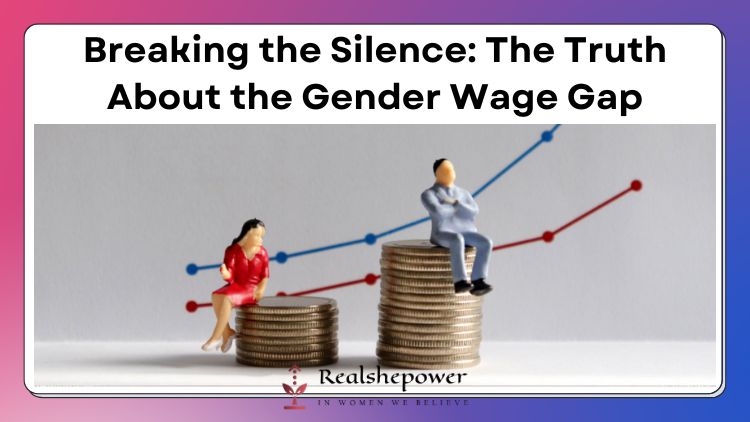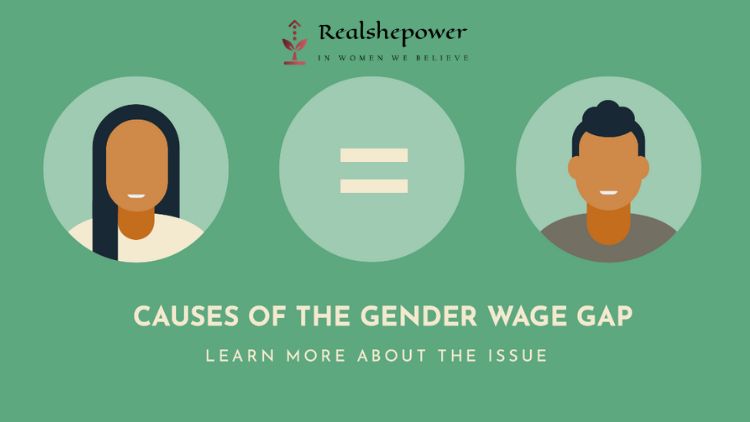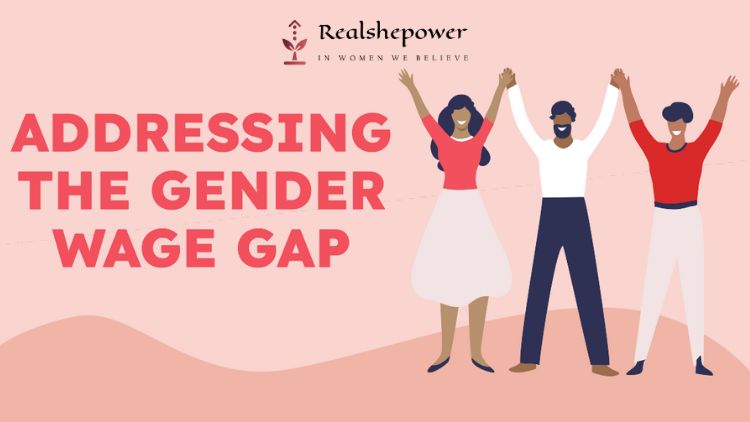The Gender Wage Gap: Why It’s Still an Issue in the 21st Century


Introduction
In the modern era of supposed gender equality, one might think that the gender wage gap is a thing of the past. However, this is far from the truth. The gender wage gap refers to the difference in earnings between men and women for the same or comparable work. Despite progress in women’s rights and gender equality, the gender wage gap persists in the 21st century. In this article, we will explore the reasons why the gender wage gap is still an issue and potential solutions to address this problem.
Table of Contents
The Gender Wage Gap: What Does the Data Say?
Before delving into the reasons behind the gender wage gap, it’s important to understand the extent of the issue. According to data from the U.S. Census Bureau, women in the United States earn only 82 cents for every dollar earned by men. The gap is even wider for women of color, with African American women earning just 63 cents and Latina women earning only 55 cents for every dollar earned by white, non-Hispanic men. Furthermore, the gender wage gap persists across all levels of education and occupation.
Causes of the Gender Wage Gap

There are several reasons why the gender wage gap persists in the 21st century:
1. Discrimination and Bias
Discrimination and bias are major contributing factors to the gender wage gap. Even today, many employers hold outdated attitudes towards women in the workplace, which can lead to unequal treatment and pay. For example, studies have shown that women are less likely to be promoted to higher positions and are often given less challenging tasks than their male colleagues. Additionally, gender bias can lead to negotiation tactics that result in lower salaries for women.
2. Occupational Segregation
Another factor contributing to the gender wage gap is occupational segregation. Women tend to be overrepresented in lower-paying occupations such as teaching and nursing, while men dominate higher-paying fields like engineering and finance. This is partly due to gender stereotypes and societal expectations about what jobs are appropriate for men and women. This leads to a situation where women are concentrated in lower-paying occupations, while men dominate higher-paying fields.
3. Family Responsibilities
Family responsibilities, such as caring for children and elderly parents, often fall disproportionately on women. As a result, women are more likely to work part-time or take time off from their careers, which can result in lower earnings and fewer opportunities for advancement.
4. Lack of Transparency and Accountability
Another reason why the gender wage gap persists is due to a lack of transparency and accountability. Many employers do not disclose salary information, making it difficult for employees to know whether they are being paid fairly. Additionally, without a clear and consistent way to evaluate job performance and compensation, it’s easier for gender bias to creep into decision-making processes.
Consequences of the Gender Wage Gap

The gender wage gap has far-reaching consequences for individuals, families, and society as a whole:
1. Economic Inequality
The gender wage gap contributes to economic inequality, as women have less disposable income and fewer opportunities to build wealth. This can have long-term consequences, such as reduced retirement savings and increased poverty rates.
2. Career Advancement
The gender wage gap also affects career advancement opportunities for women. When women are paid less than men for the same work, it can be harder for them to justify asking for promotions or negotiating higher salaries. This can lead to a cycle of underpaid and undervalued work, making it difficult for women to advance in their careers.
3. Mental Health
The stress and anxiety associated with financial insecurity can also have negative impacts on mental health, particularly for women who are already more likely to experience mental health issues such as depression and anxiety. The gender wage gap can contribute to feelings of frustration, anger, and helplessness, which can have long-term consequences for mental health and well-being.
4. Societal Inequality
Finally, the gender wage gap contributes to societal inequality. It sends a message to women that their work is less valuable than that of their male counterparts, and perpetuates the notion that men are the primary breadwinners and decision-makers in society. This can have implications for gender roles, power dynamics, and social norms.
Addressing the Gender Wage Gap: Potential Solutions

While the gender wage gap is a complex issue with many underlying causes, there are several potential solutions that can help to close the gap:
1. Pay Transparency
One potential solution is to increase pay transparency. This involves disclosing salary information and providing clear criteria for evaluating job performance and compensation. By making pay information more readily available, employees are better equipped to negotiate for fair compensation and employers are held accountable for ensuring pay equity.
2. Equal Pay Laws
Another solution is to enact stronger equal pay laws and enforcement mechanisms. These laws would prohibit employers from paying employees differently based on their gender and provide legal recourse for victims of discrimination. Additionally, they can help to raise awareness about the issue of pay inequity and create a culture of accountability for employers.
3. Flexible Work Arrangements
Offering flexible work arrangements, such as remote work and flexible scheduling, can also help to address the gender wage gap. By allowing employees to balance work and family responsibilities, they are better able to maintain their careers and earning potential. This can help to prevent women from having to choose between their careers and their families.
4. Education and Training
Finally, education and training programs can help to address the gender wage gap by providing women with the skills and knowledge needed to succeed in higher-paying fields. This can help to break down occupational segregation and create more opportunities for women to advance in their careers.
FAQs
Is the gender wage gap only an issue in the United States?
No, the gender wage gap is a global issue that affects women in countries around the world. While the extent of the gap may vary, the underlying causes and consequences are similar.
How much is the gender wage gap?
The gender wage gap varies depending on the country, industry, and occupation. In the United States, for example, women earn approximately 82 cents for every dollar earned by men. However, this varies significantly by race and ethnicity, with Black and Latina women experiencing wider pay gaps.
Is the gender wage gap illegal?
Paying employees differently based on their gender is illegal in many countries, including the United States. However, the gender wage gap persists due to a variety of factors, including discrimination, occupational segregation, and a lack of enforcement of equal pay laws.
How does the gender wage gap impact women of color?
Women of color experience wider pay gaps than white women, due to a combination of race and gender discrimination. For example, Black women in the United States earn approximately 63 cents for every dollar earned by white men. This has significant implications for economic stability and upward mobility.
How does the gender wage gap impact the economy?
The gender wage gap has significant economic implications, including reduced GDP and tax revenue. When women earn less than men, they have less disposable income to spend on goods and services, which can slow economic growth. Additionally, the gender wage gap can limit women’s opportunities for career advancement and entrepreneurship, which can hinder innovation and job creation.
Conclusion
Despite progress in gender equality, the gender wage gap remains a significant issue in the 21st century. It has far-reaching consequences for individuals, families, and society as a whole, and requires a multifaceted approach to address. By increasing pay transparency, enacting stronger equal pay laws, offering flexible work arrangements, and providing education and training programs, we can work towards closing the gender wage gap and creating a more equitable and just society.
5 Proven Strategies for Negotiating Your Salary and Getting the Compensation You Deserve

Are you tired of being underpaid and not getting what you deserve in your career? Do you feel like you are constantly being passed over for promotions and raises, even though you are putting in the hard
Deal with toxic boss in these 5 simple steps

Characteristics of a toxic boss often include partiality, disrespect for employee wellness, self-appraisal, enjoyment of gossip, and disregarding their staff, to name just a few. Although the descriptions
5 Ways for Women to Overcome Career Setbacks and Thrive

As women, we face unique challenges in the workforce. From pay disparities to gender bias, it can be difficult to break through the glass ceiling and achieve our career goals. But perhaps the biggest
You can now write for RSP Magazine and be a part of the community. Share your stories and opinions with us here.
